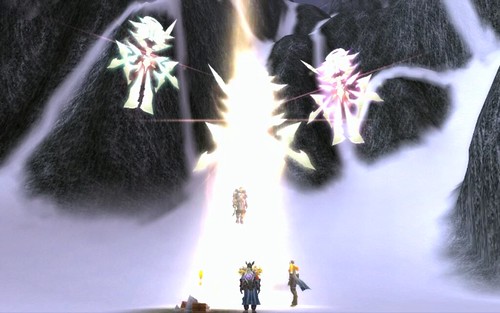Lend your voices only to sounds of freedom
No longer lend your strength to that which you wish to be free from
Fill your lives with love and bravery
And you shall lead a life uncommon
– Jewel, A Life Uncommon
Tell me what you struggle against and I will know that it is powerful, because you spend energy, time, resources, money, and strength struggling against it. Sometimes, it’s a worthy opponent. Rape. Murder. Child slavery. Genocide. These are powerful dark forces that need the armies of light to be marshaled against them ceaselessly. These are enemies worthy of any crusader’s judgement and merciless verdict.

Sometimes, however, you admit your own fears and inadequacies when you only stand for what you fight against, rather than what you fight for. You grant your enemy, whatever it is, legitimacy in your struggle against them. Every time you rail against Barack Obama or Rush Limbaugh, you prove that they’re potent forces to be reckoned with, otherwise you’d not spend time and energy on them. Your battle validates them. Every time you protest a Muslim mosque’s construction or lack of a minority in technology, you reinforce your own position as one so lacking power that you cannot solve your problems any other way than by tearing someone else down.
Tell me instead what you stand for. What you fight for. Show me through your actions that if you emerge victorious from the struggle that you won’t immediately set your energy against tearing me down, because otherwise I’ll believe that you will. Instead of opposing a mosque, build a church or grow an existing one’s community and charity. Instead of opposing the other candidate, demonstrate your commitment to the people whose votes you seek that you are capable of good works with or without an opposing party. Instead of shouting me down, ascend past me so fast that I have no choice but to look up to you.
You have more access to power, to superhero-like powers than ever before in human history. You sit at your desk, basking in wireless networks that let you reach out and touch more of humanity than ever was possible. You can effect change and mobilize people on the other side of the planet with your capabilities. You have the superhero powers. Do you have the superhero’s courage to stand up for something, to do something, to make the world a better place?
… because in the world of superheroes, the person with great power who seeks only to tear others down and destroy?
That’s the evil villain.
Did you enjoy this blog post? If so, please subscribe right now!
Get this and other great articles from the source at www.ChristopherSPenn.com! Want to take your conference or event to the next level? Book me to speak and get the same quality information on stage as you do on this blog.








 In old Japan, it was fairly common for a young person in the tradesman class to be apprenticed to a master. Whether it was blacksmithing, cooking, or any tradeskill, apprenticeship was just about the only way to get an education. What’s interesting about old Japanese apprenticeships was the duration and work asked of the apprentice. In many cases, an apprentice would spend many years doing very menial work, like sweeping the floor of the blacksmith shop.
In old Japan, it was fairly common for a young person in the tradesman class to be apprenticed to a master. Whether it was blacksmithing, cooking, or any tradeskill, apprenticeship was just about the only way to get an education. What’s interesting about old Japanese apprenticeships was the duration and work asked of the apprentice. In many cases, an apprentice would spend many years doing very menial work, like sweeping the floor of the blacksmith shop.
 someone
someone  The flip side of the coin is that we tend to become the company we keep. If we surround ourselves with bitter, angry, uninspiring people who do nothing but urinate into our mental pool, we go that route too – and unlike positive, inspiring people, it doesn’t take much. As Tony Robbins once quipped, you don’t need to drink a gallon of poison to have an effect – just a little is more than enough.
The flip side of the coin is that we tend to become the company we keep. If we surround ourselves with bitter, angry, uninspiring people who do nothing but urinate into our mental pool, we go that route too – and unlike positive, inspiring people, it doesn’t take much. As Tony Robbins once quipped, you don’t need to drink a gallon of poison to have an effect – just a little is more than enough. Where the martial arts (good ones, anyway) differ is the continued emphasis on the basics. We learn the basics but constantly revisit them to refine our understanding and improve them. As our basics get stronger, the “advanced” material (which is comprised of basics strategically arranged and put together) improve as well. Because advanced material relies on the basics, if we stop refining them, our advanced skills and techniques suffer as well.
Where the martial arts (good ones, anyway) differ is the continued emphasis on the basics. We learn the basics but constantly revisit them to refine our understanding and improve them. As our basics get stronger, the “advanced” material (which is comprised of basics strategically arranged and put together) improve as well. Because advanced material relies on the basics, if we stop refining them, our advanced skills and techniques suffer as well.
 One of my favorite learning and teaching metaphors comes by way of both the martial arts and
One of my favorite learning and teaching metaphors comes by way of both the martial arts and